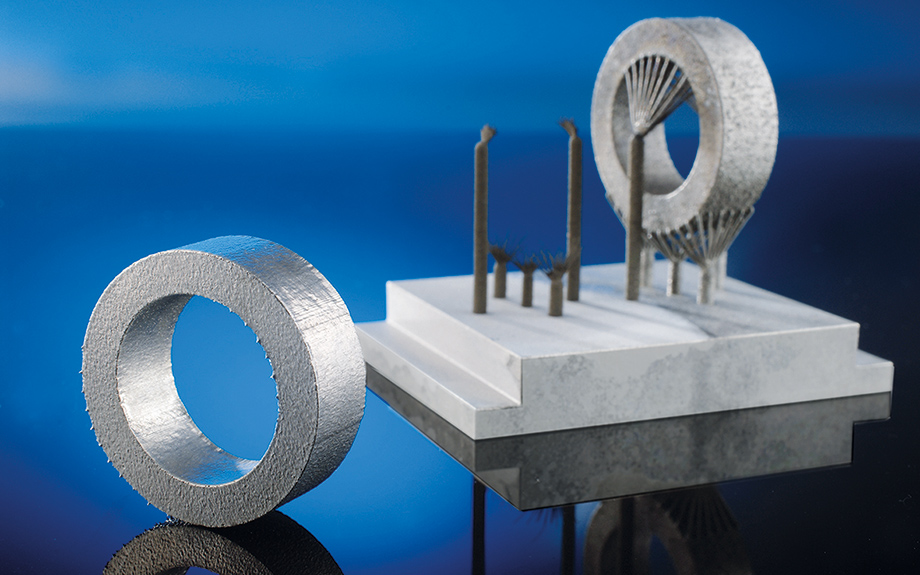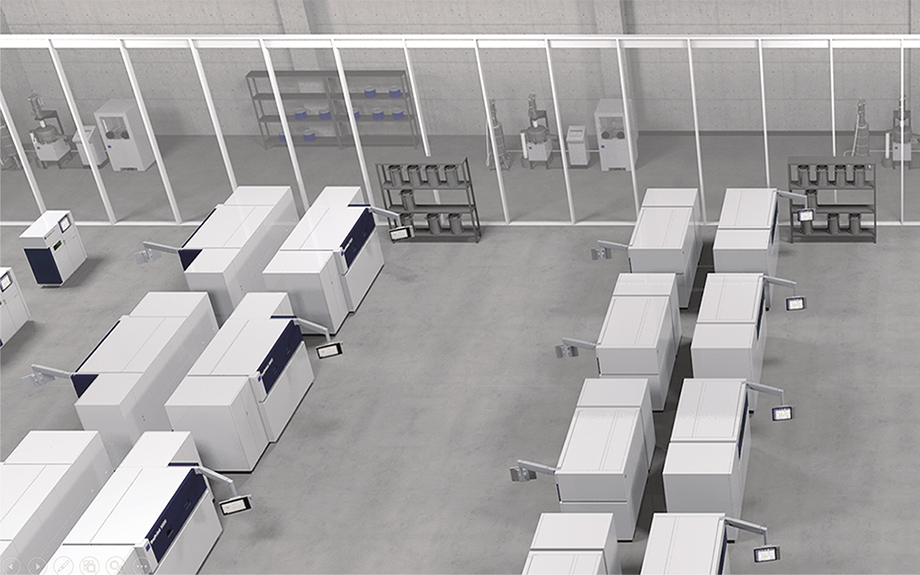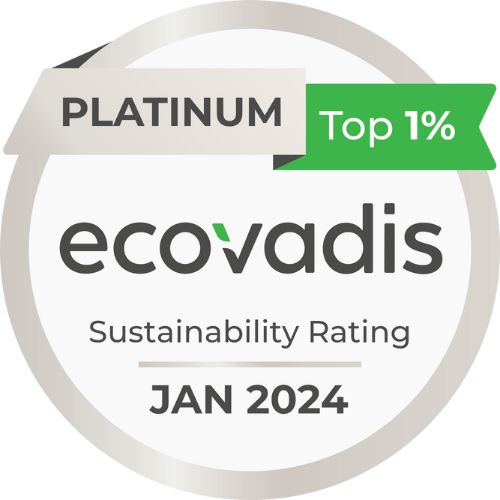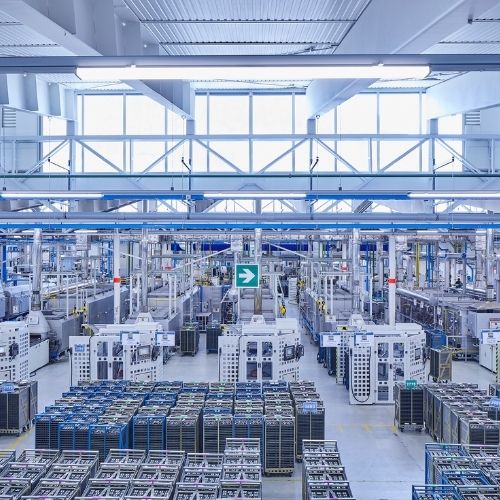Five companies and two research institutes were involved in one of the most exciting technical issues in production. Coordinated by Daimler AG and within the framework of the BMBF funding initiative “Photonic Process Chains”, these project partners examined the “Integration of Additive Manufacturing Processes in Automobile Series Production – AutoAdd”. They focused on the metallic, additive manufacturing process developed at the Fraunhofer Institute for Laser Technology ILT in Aachen, Germany: Laser Powder Bed Fusion (LPBF), also known as Selective Laser Melting (SLM).
The German Federal Ministry of Education and Research (BMBF) wants to literally bring light into production under the term “Photonic Process Chains”. Research projects are to integrate photon-based manufacturing processes such as metal 3D printing into product planning processes. The project aims to develop flexible, hybrid manufacturing conceptual designs, which the industry can use to produce individualized and complex products more efficiently than before.
Hybrid process chain to reduce unit costs
Of the 14 joint projects within the funding initiative, the AutoAdd project aimed to make it easier for the automotive industry to use additive manufacturing within three years. The project partners focused on integrating the LPBF process chain in the automotive mass production environment to create a hybrid process chain and, thus, to reduce unit costs. The BMW Group and Daimler defined the requirements for the additive process chain, which the high-tech company TRUMPF and research institute Fraunhofer ILT used to develop various LPBF plant and finishing conceptual designs. The result was potentially production-ready optical designs as well as a modular system architecture, which, for example, enables the use of multiple beam sources and a so-called interchangeable cylinder principle. In addition, the project team developed promising automatable post-processing concepts, including removal of support structures, and analyzed novel scalable materials produced by GKN Powder Metallurgy.

Test piece, with supports removed with a wet-chemical process.
© Fraunhofer ILT, Aachen, Germany.
Finally, the Karlsruhe Institute of Technology (KIT) evaluated the new factory designs: Using a simulation model, the engineers of the wbk Institute for Production Science visualized an exemplary, conventional process chain, in which they were able to design various possible LPBF plant concepts. With methods such as cost or benchmark analyzes, they were able to compare the new approaches from a technical and economic point of view with previous ones.
Additive mass manufacturing made possible
The results of the three-year joint project are quite impressive: Since modular cylinders and the use of wet-chemical immersion baths can now be used to remove, batchwise, components in the post-processing step, the entire process chain can be automated and non-productive time saved. This can increase the overall profitability. The AutoAdd project team has also developed common metrics for evaluating LPBF manufacturing equipment and identified them for the most popular equipment manufacturers as part of a large-scale benchmarking exercise. By using standardized benchmark jobs with different test specimens, industrial users can now calculate transferable key figures with which they will be able to find the most economical system for their purposes. In addition, a fundamental step was taken: One of the most important points needed to make additive manufacturing technology ready for series production – the reproducibility of the mechanical properties – was demonstrated and evaluated in several state-of-the-art facilities. Integrating an economic additive process chain in automotive mass production can now be considered possible after the end of the project.

Additive Manufacturing factory design of the future.
© TRUMPF, Ditzingen, Germany
From an academic point of view, the research project also brought about positive effects: Content emerged from AutoAdd for four dissertations, and the knowledge thus gained can also be used for lectures. Moreover, in 2019 there will be another project, partly based on the present results, dealing with the line-integration of additive manufacturing processes to implement the designed additive process chain.
Research project »Integration of Additive Manufacturing Processes in Automobile Production -AutoAdd«
Project partners:
- Bayerische Motoren Werke AG, Munich, Germany
- Daimler AG, Ulm, Germany
- Fraunhofer Institute for Laser Technology ILT, Aachen, Germany
- GKN Powder Metallurgy, Radevormwald, Germany
- Karlsruhe Institute of Technology (KIT), Karlsruhe, Germany
- netfabb GmbH, Lupburg, Germany
- TRUMPF Laser- und Systemtechnik GmbH, Ditzingen, Germany
Project period:
June 1, 2015 to May 31, 2018
Project volume:
€3.37 million, (about a 57 percent share of funding from the Federal Ministry of Education and Research BMBF).
About GKN Powder Metallurgy
GKN Powder Metallurgy is your full metal shapes solutions provider, shaping powder metal into high performance and high precision components. We provide leading powder metal expertise and process experience to transform ideas into production. The company consists of GKN Hoeganaes, GKN Sinter Metals, and GKN Additive to provide powder materials, conventional components, and Additive Manufacturing production. We combine three focused businesses under one brand. Together we are over 7,400 problem solvers over 34 locations, setting our global engineering network at the highest standard.
Global Media Contact
Susanne Trautmann
Susanne.trautmann@gkn.com
+49 151 6404 4890


